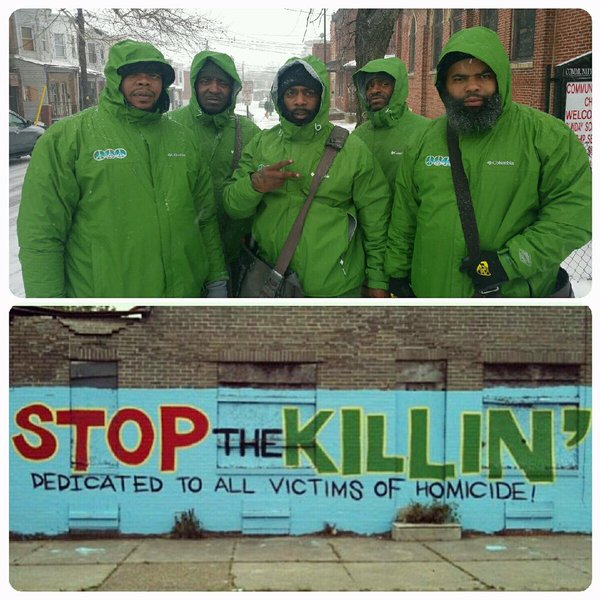 As is often the case in low-income communities, Camden has a history of crime. In fact, Camden gained national attention as one of the most crime-laden cities in America, plagued by high volumes of shootings and murders. Fortunately for residents and the City of Camden as a whole, the shootings have consistently decreased in the last several years. While the Camden County Police Department has received a great amount of credit (and rightly so) for their work in driving down the crime with implementation of their community policing model, another program is deserved of some of the recognition, as well. The program being alluded to is Cure4Camden.
As is often the case in low-income communities, Camden has a history of crime. In fact, Camden gained national attention as one of the most crime-laden cities in America, plagued by high volumes of shootings and murders. Fortunately for residents and the City of Camden as a whole, the shootings have consistently decreased in the last several years. While the Camden County Police Department has received a great amount of credit (and rightly so) for their work in driving down the crime with implementation of their community policing model, another program is deserved of some of the recognition, as well. The program being alluded to is Cure4Camden.
Cure4Camden is a community-based violence intervention initiative that focuses on disrupting the spread of violence in the City of Camden, specifically in the communities of Centerville, Cooper Plaza/Lanning Square, Liberty Park, and Whitman Park. The program employs a number of trusted community members to serve as outreach workers. These workers act as “interrupters” in that they are able to anticipate possible occurrences of violence and intervene before the violence erupts. Furthermore, the outreach workers identify those involved in acts of crime and then impart knowledge that will hopefully lead these individuals to change their tendencies. Workers are trained in the deployment of persuasion, alternatives to violence, and detection and diagnosis of such violent behaviors. Aside from being trained in an array of different areas, workers bring a particular level of credibility with them in that many of them were once involved in the spread of violence. By giving their personal takes on the matter and explaining the negative impacts of such criminal activity, they encourage at-risk individuals to leave a life of crime behind and use new methods and skills that will lead to the de-escalation of conflicts.
Recognizing that violence is a deeply-rooted, pervasive issue that spreads much like a disease, Cure4Camden utilizes a three-pronged approach that incorporates the same components used to reverse the outbreak of disease epidemics.
The first step in the approach is the detection and interruption of potentially violent conflicts. Because the Cure4Camden team is composed of members who have built rapport with the surrounding communities, the workers are notified of any ongoing conflicts and recent activities; they then use a variety of techniques to mediate the conflicts so that they do not grow into full-fledged issues. As a result of continued community engagement and partnerships with local hospitals, outreach workers are quickly informed of any shootings, and upon receiving information, workers then communicate with victims, family and friends of the victim, and anyone else affected by the event in order to prevent possible retaliation. In addition to the mediation process, all conflicts are accompanied with a follow-up that lasts as long as needed in order for the situation to be diffused.
The second step is the identification and treatment of the highest risk. This component focuses on developing a relationship with individuals most likely to commit acts of violence. Throughout the course of the relationship, workers explain the costs of violence, as consequences not only affect the client but can also put loved ones in precarious positions, as well. In making their clients aware of the overall impact that their criminal behaviors can have on not only themselves but others around them, workers then enlighten them on alternative responses and solutions to conflicts. Improving the wellbeing of clients is also a priority; therefore workers help the individuals in other areas of their life, providing them with social services, such as job and education training.
The third component of the model is the changing of group norms. Realizing that their mission is heavily dependent on the communities in which they work in, the Cure4Camden team prioritizes community engagement. In order for change to take effect and spread to the masses, workers meet with leaders and residents on a consistent basis so that the new norms can eventually replace old behaviors, ideologies, and expectations. An assortment of materials are distributed in order to convey the message that violence is an unacceptable behavior that can indeed be changed. In addition to the distribution of thought-provoking materials, residents are exposed to the promotion of non-violence through periodical peace marches, events, and activities.
Cure4Camden is an extension of a larger Chicago-based model, known as Cure Violence. Being supported by Cure Violence ensures that Cure4Camden workers are carefully trained and that the program is equipped with the connections and resources needed in order to reach the highest risk. In addition to Camden, Cure Violence has expanded to more than 50 sites around the world, highlighting the model’s adaptability and effectiveness. While many anti-violence programs experience successful evaluations in their original site, few have shared the same level of success that Cure Violence has attained when replicating the model in other communities. Baltimore, Brooklyn, and New Orleans are a few of the major cities that have adopted the Cure Violence model; and statistics show that cities applying the model have experienced reductions in violence (range of 40-70%) in the first year of implementation with even greater reductions in later years.
Perhaps the greatest contrast between Cure Violence and other programs is the difference in approach. Cure Violence, founded by epidemiologist Gary Slutkin, uses evidence-based solutions based off of data that indicates extreme similarities between violence and disease. It is understood that the three characteristics of an epidemic disease are as follows: clustering, spread, and transmission. Violence shares all three of these characteristics, which explains why Cure4Camden and other extensions of Cure Violence use the same three-component model that is used to treat epidemic diseases. In understanding the connection between violence and disease, more focus can be placed onto prevention, rather than the long-standing world view of prosecution in relation to acts of violence and other criminal activities.
As part of Camden’s National Forum on Youth Violence Prevention Plan, Cure4Camden aims to change the outcome of the city’s youth, as well as improve overall quality of life for residents. The innovative model has already seen signs of success with crime rates decreasing, and with a refreshing approach that takes a deeper (and different) look into violence, it can be assumed that Cure4Camden will have a sustainable impact on the community for years to come.
--Submitted by Alexander Darling



